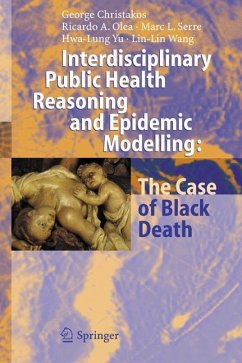This multidisciplinary reference takes the reader through all four major phases of interdisciplinary inquiry: adequate conceptualization, rigorous formulation, substantive interpretation, and innovative implementation. The text introduces a novel synthetic paradigm of public health reasoning and epidemic modelling, and implements it with a study of the infamous 14th century AD Black Death disaster that killed at least one-fourth of the European population.
From the reviews: "This book is the result of a collegial effort to develop a new interdisciplinary research paradigm in public health ... . this is a message for the mass that has been packaged for the elite. Regardless of their mathematical level, all readers will however appreciate the tremendous work that went into the collection and fascinating interpretation of historical data on Black Death." (Pierre Goovaerts, Computers Geosciences, Vol. 33, 2007) "The authors' overall theme is that generating accurate and useful ... mathematical models of disease epidemiology and the impact of interventions requires a true interdisciplinary approach. ... Readers interested in the background data related to the epidemiology of the Black Death will probably enjoy perusing the detailed, annotated data appendices. This would be a fine addition to a technical library as a resource for persons who conduct sophisticated mathematical modeling." (Martin I. Meltzer, Centers for Disease Control and Prevention, January, 2006)








